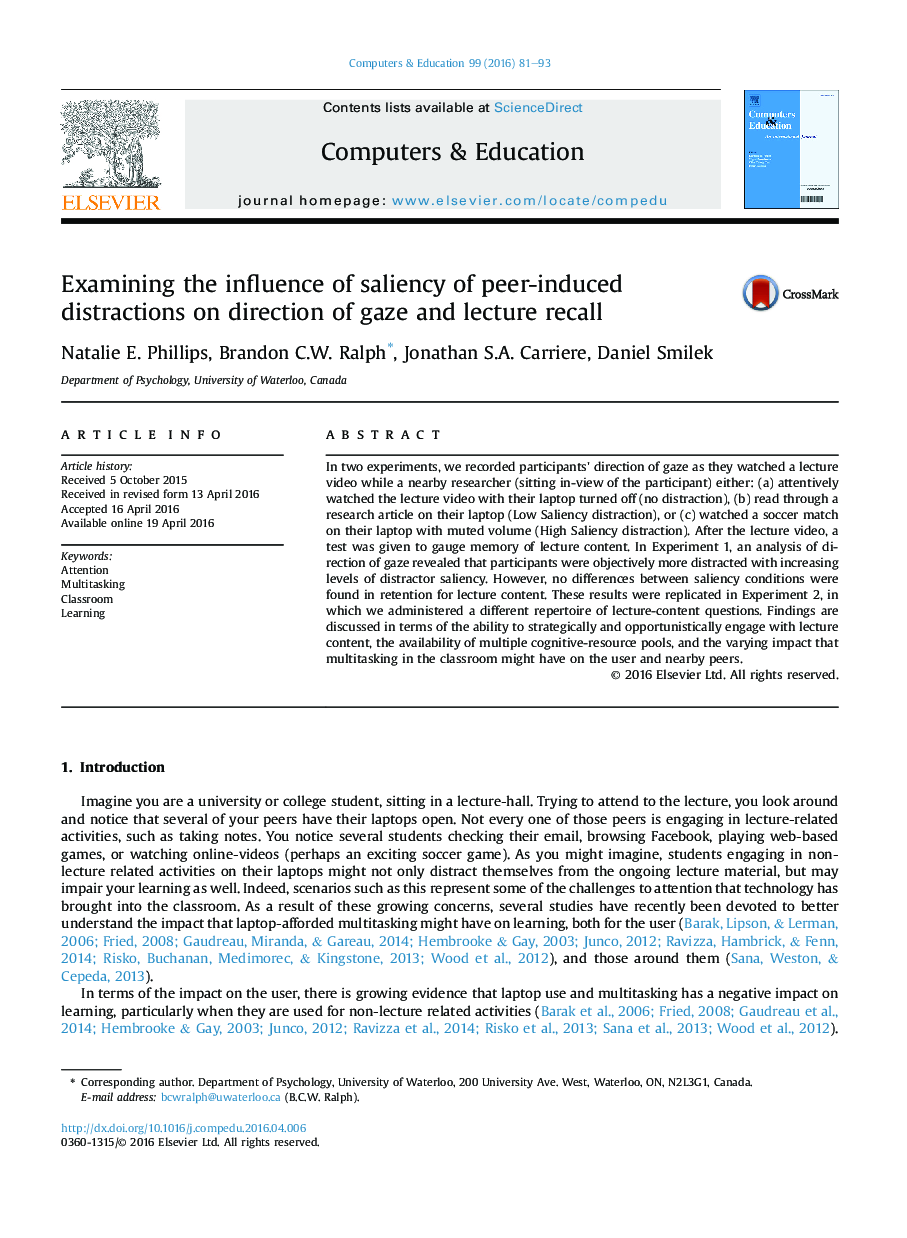| Article ID | Journal | Published Year | Pages | File Type |
|---|---|---|---|---|
| 6834861 | Computers & Education | 2016 | 13 Pages |
Abstract
In two experiments, we recorded participants' direction of gaze as they watched a lecture video while a nearby researcher (sitting in-view of the participant) either: (a) attentively watched the lecture video with their laptop turned off (no distraction), (b) read through a research article on their laptop (Low Saliency distraction), or (c) watched a soccer match on their laptop with muted volume (High Saliency distraction). After the lecture video, a test was given to gauge memory of lecture content. In Experiment 1, an analysis of direction of gaze revealed that participants were objectively more distracted with increasing levels of distractor saliency. However, no differences between saliency conditions were found in retention for lecture content. These results were replicated in Experiment 2, in which we administered a different repertoire of lecture-content questions. Findings are discussed in terms of the ability to strategically and opportunistically engage with lecture content, the availability of multiple cognitive-resource pools, and the varying impact that multitasking in the classroom might have on the user and nearby peers.
Related Topics
Social Sciences and Humanities
Social Sciences
Education
Authors
Natalie E. Phillips, Brandon C.W. Ralph, Jonathan S.A. Carriere, Daniel Smilek,
